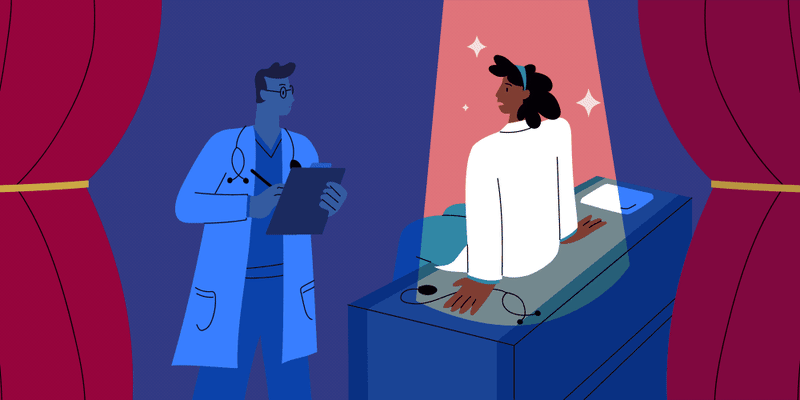
At the hospital where I work, there is a hallway I walk down every day on my way to the OR. It is usually quiet and empty, except for a few rooms where minor procedures take place.
However, one day as I was coming down this hallway I noticed a crowd of people spilling out from one of the rooms. When I peered in, I observed a chaotic scene. A nurse ran out of the room carrying a gown that had been drenched in the patient’s blood. I walked in to see if they needed help.
The patient was a middle-aged woman with a history of cirrhosis and esophageal varices. She had undergone a banding procedure recently but was noted to have a significant hemoglobin drop this morning. She was emergently brought into the procedure room to undergo a diagnostic endoscopy. However, only minutes after she was wheeled into the room, she began to profusely bleed from her mouth and nostrils. As she had likely ruptured her varices, she was immediately intubated and aggressively resuscitated with blood products and fluids. When I entered the room, there was a crowd of providers who were busy trying to draw labs and to obtain more vascular access.
The GI doctor who was assigned to her case hurriedly grabbed the endoscope but was unable to utilize it effectively against the intractable hemorrhage which blocked his view. I grabbed the suction tube and tried to assist him, but the mouth continued to fill with blood, forming a red, impenetrable wall.
Realizing that we needed a change of plan, he told me he needed to briefly step outside to call his colleague as well as a general surgeon. He told me he would return soon and asked me to keep her stable until he returned.
However, within moments of his departure, she became bradycardic, hypotensive, then pulseless. I beckoned a nurse standing by to immediately begin chest compressions.
Having entered this room to lend an extra set of hands, I suddenly found myself in the position of a code leader.
Though only for a few minutes, the responsibility felt heavy. Despite having accomplished ROSC several times, she continued to deteriorate in the setting of uncontrolled hemorrhage.
The staff looked to me for a more definitive plan, but I did not have one. Even though I felt confident in the tasks related to the code I found myself terribly unprepared for any of the decision-making regarding her end-of-life care. I had just learned about this patient for the first time moments ago. I didn’t know her or her family personally. Should we continue the code? Should we attempt more invasive measures?
“I honestly don’t know,” I replied. “I may be leading this code, but this is not my patient. I cannot make these decisions lightly.”
Even when the GI physician returned in a few minutes and was informed of the situation, he, too, was unable to comment as this patient was not his. Though we were both involved in her care, we ultimately felt we could not proceed until we spoke to the physician in charge of her care, to whom she “belonged.” Especially because it was an emergency where stakes were so high, it was important to honor that relationship.
Fortunately, her physician promptly arrived at the door only minutes later. He told us that he specifically had a conversation with the patient and the family prior to the procedure to prepare them for potential complications. This was an unfortunate event, but they were prepared. With his guidance, we stopped the code. He left to inform her family.
As a resident, this was the first time that I realized the grave responsibility of having “ownership” of a patient. Prior to this point, I had only understood this is a practical or legal concern — the name that would be under the column, “Attending physician,” on our electronic medical record system.
However, in this unexpected set of events, as I was faced with a series of impossible questions regarding the patient’s life in the middle of a code, I learned that the true meaning of “ownership” regarding patient care is far more sacred, and far more profound than simply being involved in some manner. Ownership simultaneously meant a privilege and a duty. It is the privilege of knowing the patient better than anyone else, the privilege of holding the patient’s and the family’s trust. It is also the duty to be prepared for the worst of possible outcomes and to be there for the patient until the very end.
When the patient’s physician walked in, he was confident about his decision-making because she was his patient and he knew her better than anyone else. He took his responsibility as her doctor seriously.
To this day, whenever I walk down this hallway I think back to that incident. Though it will be many years until I will have patients of my own, this encounter has challenged me to embrace the concept of ownership and to treat each patient as if he or she were mine.
One day, I hope to be able to walk into a room in need of guidance as I needed that day. I look forward to telling them that am the patient’s doctor, confidently reassure them that things will be okay.
Jason Han, MD is a thoracic surgeon and a 2018–2019 Doximity Author.







